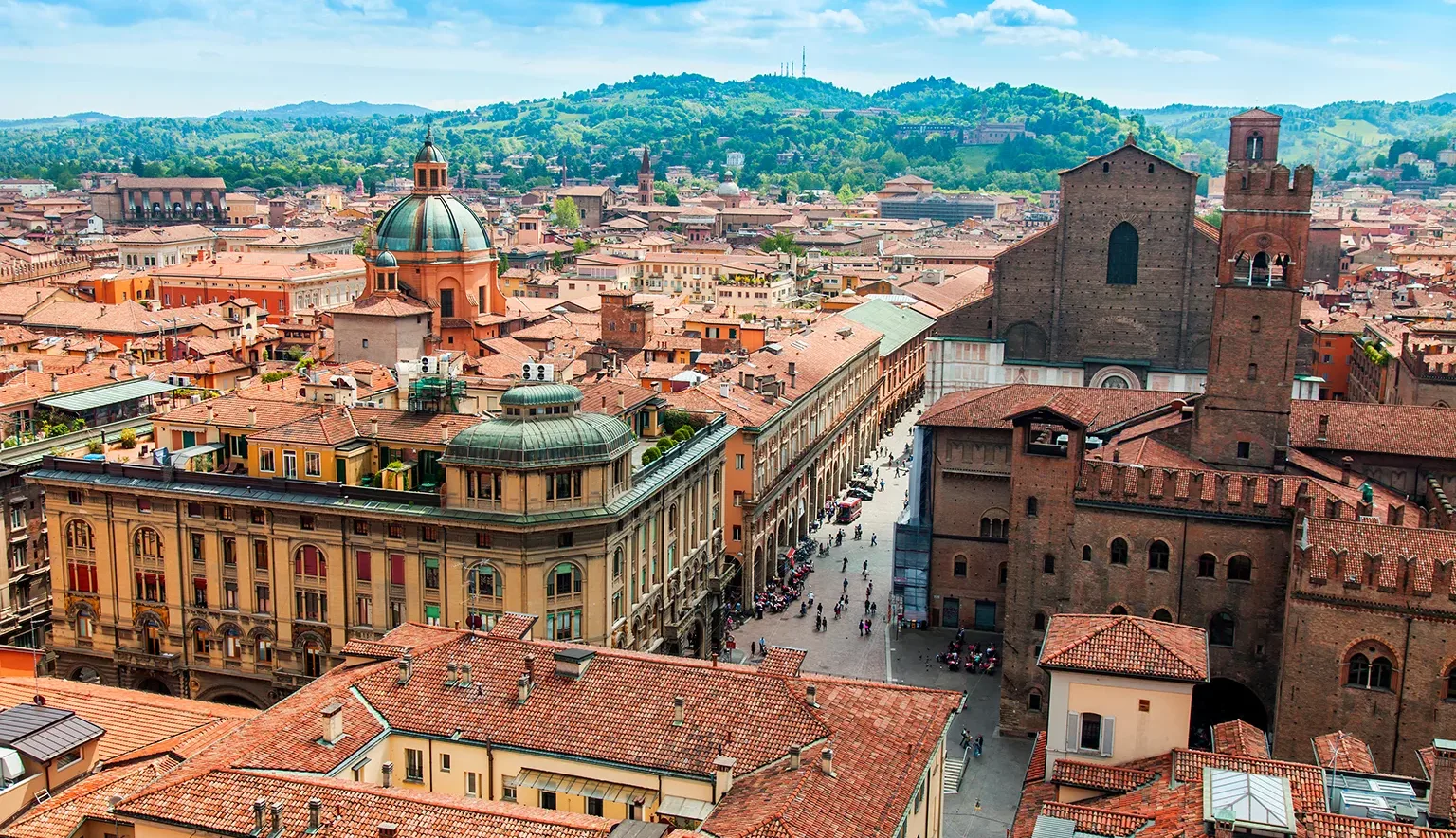BOLOGNA – 44.4949° N, 11.3426° E
Sporting a variety of nicknames including “La Grassa” – the Fat City – due to its rich and decadent cuisine; “La Rossa” – the Red City – based on its red-tiled roofs and leftist politics during its time as a stronghold against Nazi invasion; and “La Dotta” – the Learned City – as it boasts the world’s oldest university, Bologna is a medieval maze of elegant architecture and winding side streets, radiating charm far too often overlooked in favour of more touristic, neighbouring cities like Rome, Milan, or Florence.
The moment you enter the historic city centre, you will be hypnotised by the colonnaded history that envelops the streets and peels off in the orange Pantone layers of terracotta buildings, defining towers, elaborate streetlamps, and restaurants that spill out onto the pavement in a cascade of music, laughter, and food so sybaritic it tastes sinful.
Seemingly engulfed in a sepia-like filter, the city is an intersection of history and radical modernity, where sophisticated operagoers and gleefully inebriated students fuse together the glow of former Renaissance glory and graffiti-embellished piazzas.
Old, beautiful, gritty, and vibrant, Bologna is famous for its extensive porticoes, which were recently declared a UNESCO World Heritage Site. Dating back to 1041, in an effort to expand living spaces, the porticoes cover more than 38 kilometres (km) within the centre and can reach up to 53km outside the city walls, adorned with murals, frescoes, and vermilion-painted concrete.
Founded in 1088, the University of Bologna is the oldest university in Europe and holds the formidable Teatro Anatomico, an ornate anatomical theatre built in 1636 entirely from wood and decorated with statues of ancient physicians, local athenaeum, and “spellati” – skinned figures. Lectures were once conducted here with cadavers laid out in the centre of the room on the marble slab for dissection. There is even a spy hole in the wall of the theatre where the church once watched classes to ensure not too much progress was being sought.
Additionally, there is the Basilica de San Petronio, which, although started in 1390, appears noticeably unfinished, with the bottom half composed of striking red and white marble in stark contrast with the abrupt brick above. There are differing stories as to why this occurred, from the church running out of money to the Pope halting construction as he did not approve of a cathedral larger than St. Peter’s Basilica in Rome.
Quadrilatero is one of the most atmospheric areas of the city, whose narrow streets have served as the city’s market since the Middle Ages and are still ripe with stalls full of hanging mortadella, giant parmesan wheels, legs of ham that rival even the stoutest of toddlers, and a cornucopia of fragranced fruit and vegetables.
Despite having suffered considerable damage from bombings in the Second World War, Bologna is one of the few remaining walled cities in Europe, with the city centre containing an immense wealth of critically important Medieval, Renaissance, Baroque, and modern-day culture, utterly perfect to lose yourself in.






















